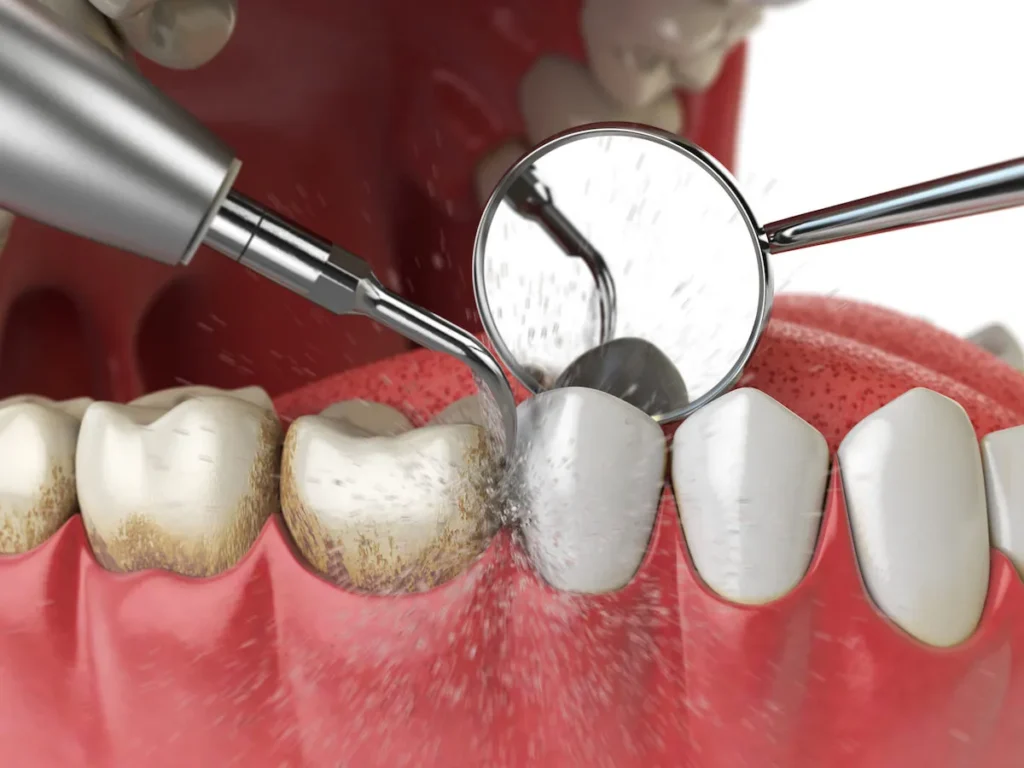
Teeth cleaning, also called dental prophylaxis, is a routine dental procedure aimed at removing plaque, tartar (calculus), and stains from teeth to maintain oral health and prevent gum disease, cavities, and bad breath.
Why Teeth Cleaning Is Important
- Removes plaque (soft, sticky film of bacteria) and tartar (hardened plaque).
- Helps prevent gum disease (gingivitis and periodontitis).
- Reduces the risk of tooth decay.
- Eliminates surface stains from food, drink, or smoking.
- Promotes fresh breath and a brighter smile.
🔹 Types of Teeth Cleaning
- Routine Cleaning (Prophylaxis)
- For people with generally healthy gums.
- Done every 6 months.
- Focuses on removing plaque and tartar from above the gumline.
- Deep Cleaning (Scaling and Root Planing)
- For patients with gum disease.
- Cleans below the gumline and smooths root surfaces.
- Often done in multiple visits with local anesthesia.
- Gross Debridement
- For patients who haven’t had cleanings in a long time and have heavy tartar buildup.
- Prepares the mouth for more detailed evaluation and treatment.
🔹 What Happens During a Cleaning
- Examination: Dentist or hygienist checks your mouth and gums.
- Scaling: Plaque and tartar are scraped off using manual or ultrasonic tools.
- Polishing: Teeth are polished with a gritty toothpaste to remove surface stains.
- Flossing: Professional flossing to clean between teeth.
- Fluoride Treatment (optional): To strengthen enamel and prevent decay.
🔹 Aftercare Tips
- Mild sensitivity or gum soreness may occur and typically resolves in a day.
- Maintain daily brushing and flossing.
- Avoid smoking, sugary foods, and acidic drinks for better results.
🔹 How Often Should You Get a Cleaning?
- Most people: Every 6 months
- Those with gum disease or certain health issues: Every 3–4 months

